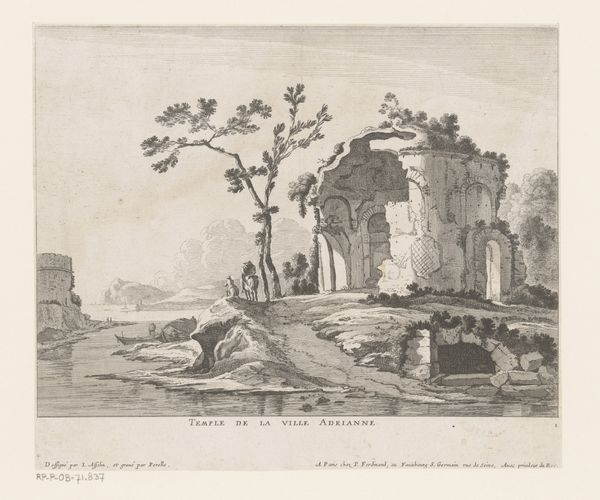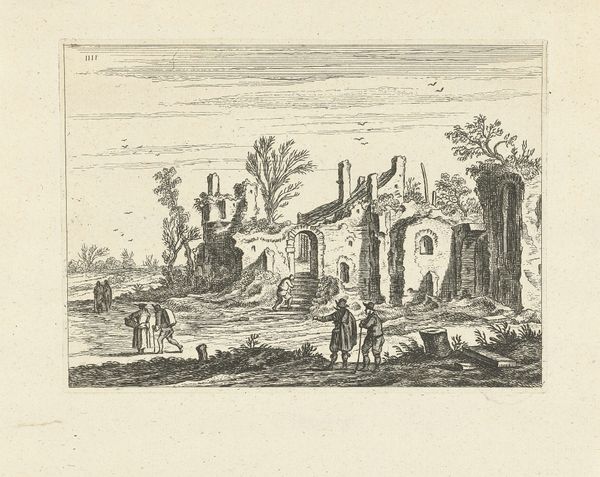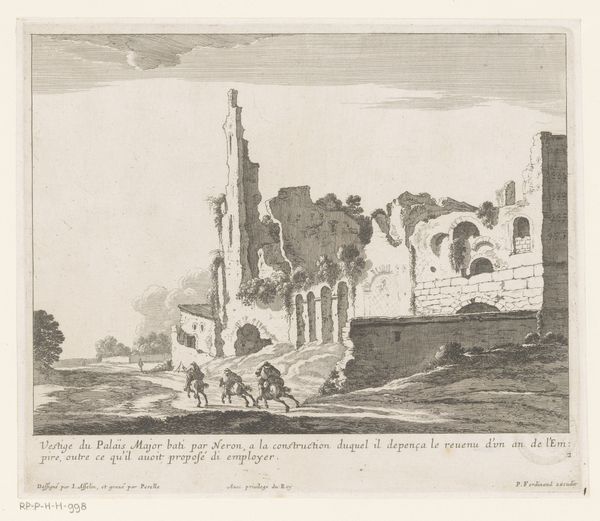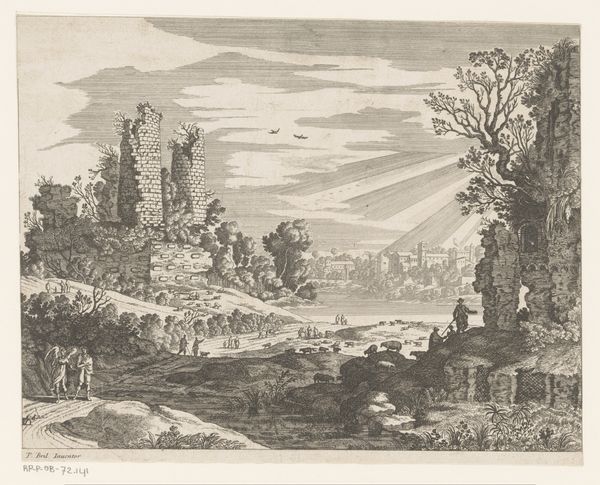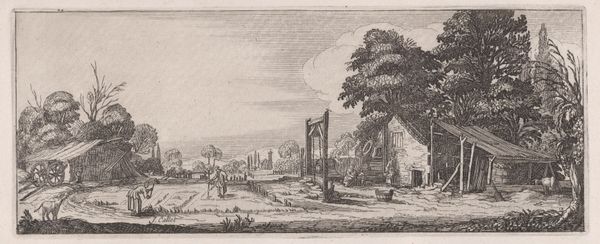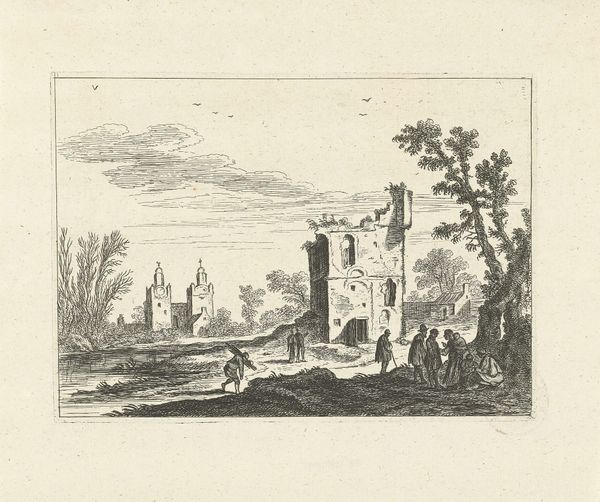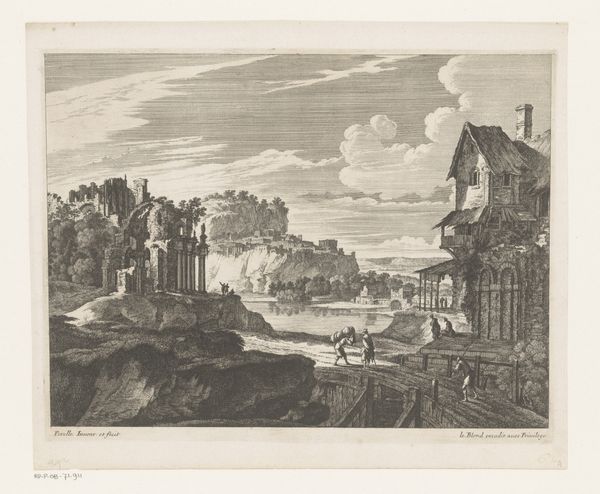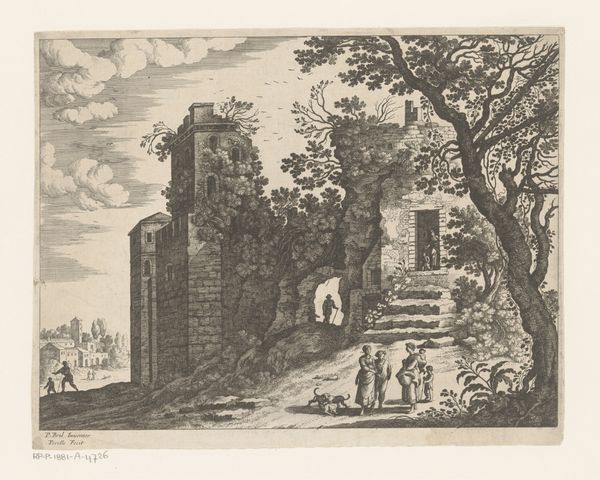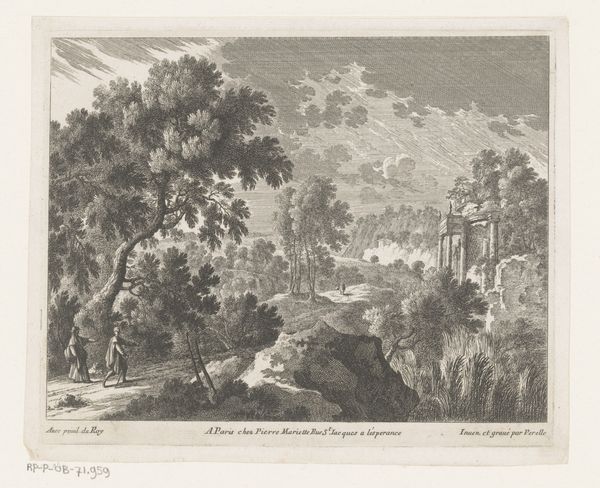
print, engraving
#
baroque
# print
#
old engraving style
#
landscape
#
figuration
#
line
#
cityscape
#
history-painting
#
engraving
Dimensions: height 212 mm, width 252 mm
Copyright: Rijks Museum: Open Domain
Curator: This is "Tempel van Marcus Cursus," an engraving created sometime between 1627 and 1655 by Nicolas Perelle, currently residing here at the Rijksmuseum. It's a wonderfully evocative cityscape. Editor: Yes, and there’s an immediate sense of melancholic decay that the artist conveys so well. The way the lines etch out the ruins creates such an aura of bygone grandeur. Curator: Observe the strategic use of line. Perelle masterfully employs hatching and cross-hatching to define form and texture. Light and shadow dance across the architecture. Note how the detailed linework highlights the crumbling facade of the temple. Editor: Which underscores a key tension of Baroque art – the dialogue between earthly grandeur and the ravages of time. Who held power? What was lost to make room for its creation? It is an elegy. Curator: True. Consider how Perelle positions the viewer—we are distanced, outside the city almost, able to admire it with detachment. The human figures add a layer of scale and perspective to the scene. Their presence, so small within this architectural grandeur, makes you contemplate the vastness of time. Editor: Exactly. They almost appear to be footnotes, anonymous laborers driving their cattle. And what are they moving and toward whom? In this light, I am curious about the people who inhabited and moved through the space. What was life like for them? Curator: Well, Perelle seems primarily concerned with the aesthetics of ruin. There’s beauty even in dilapidation. It demonstrates an interesting treatment of perspective as well. See how the artist plays with recession, leading your eye from foreground to background seamlessly. Editor: And while the use of light and shadow creates visual drama, the scene’s content leaves me grappling with historical power dynamics, the transient nature of empire. These ruins didn't just happen. There is a complex past to unpack in order to understand their meaning in the present. Curator: That’s a fascinating perspective, to contemplate art this way. I still find myself drawn to the interplay of lines and the overall composition. Editor: And I am left contemplating how Perelle encourages us to question the structures—both literal and figurative—that shape our world. Thank you for your thoughts. Curator: Likewise!
Comments
No comments
Be the first to comment and join the conversation on the ultimate creative platform.
